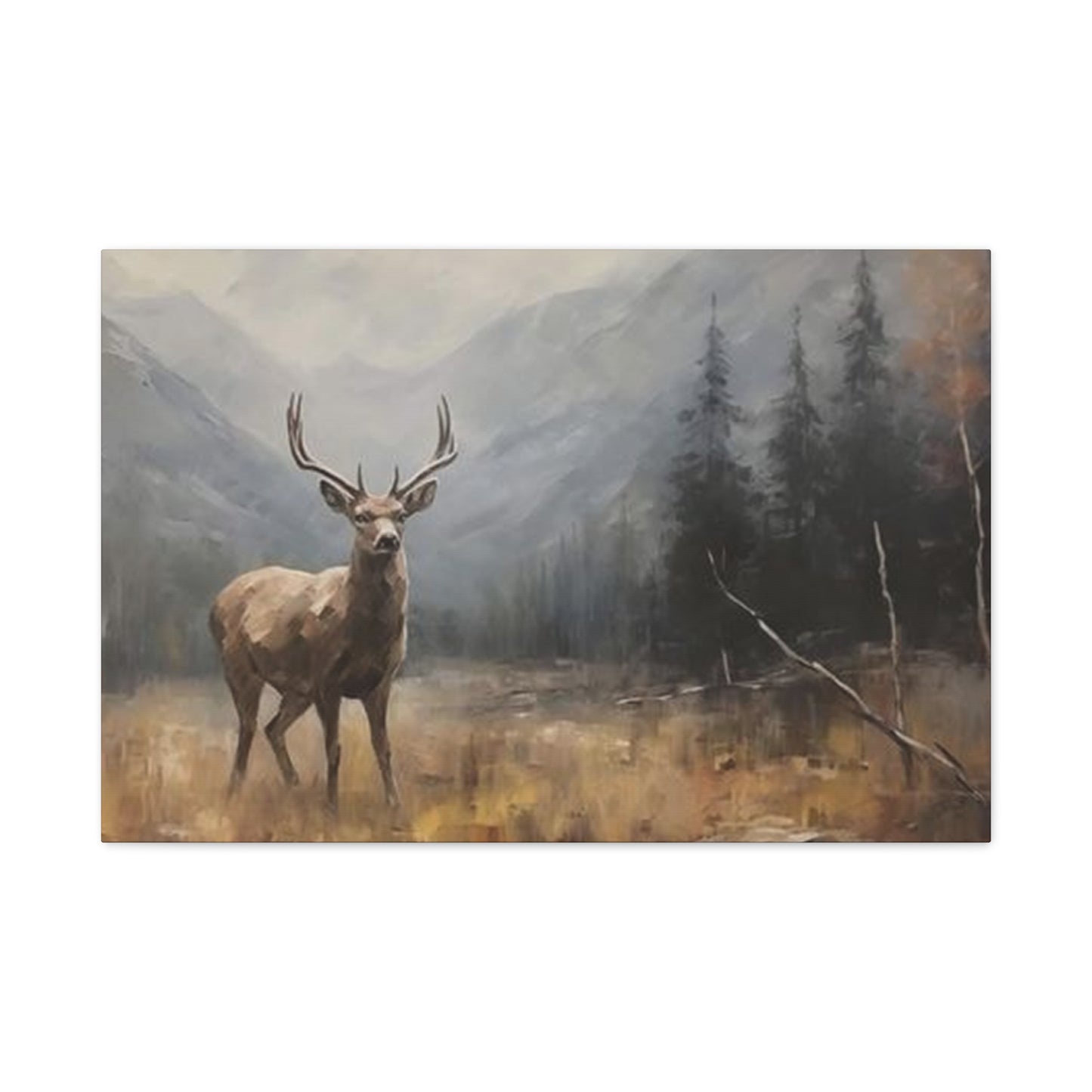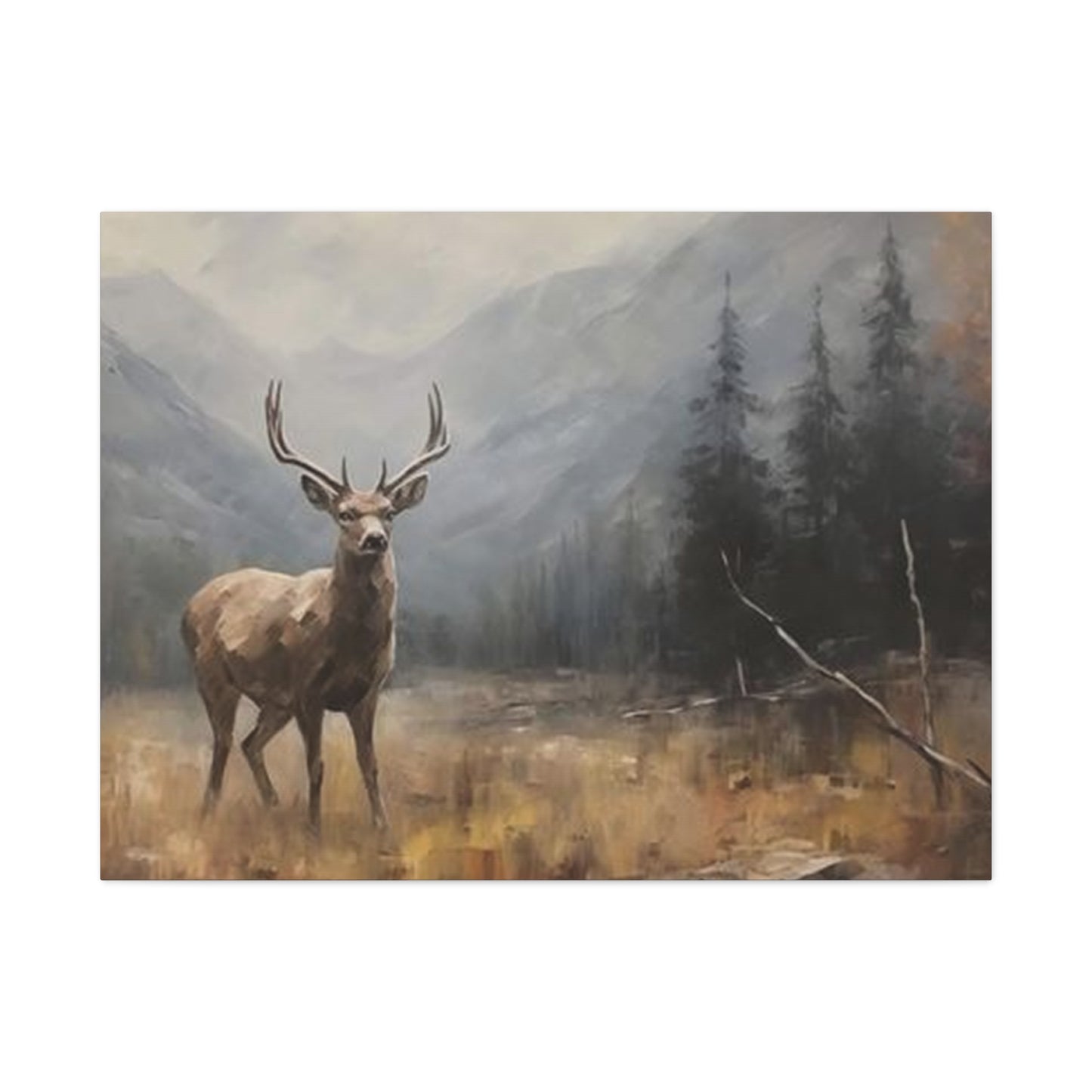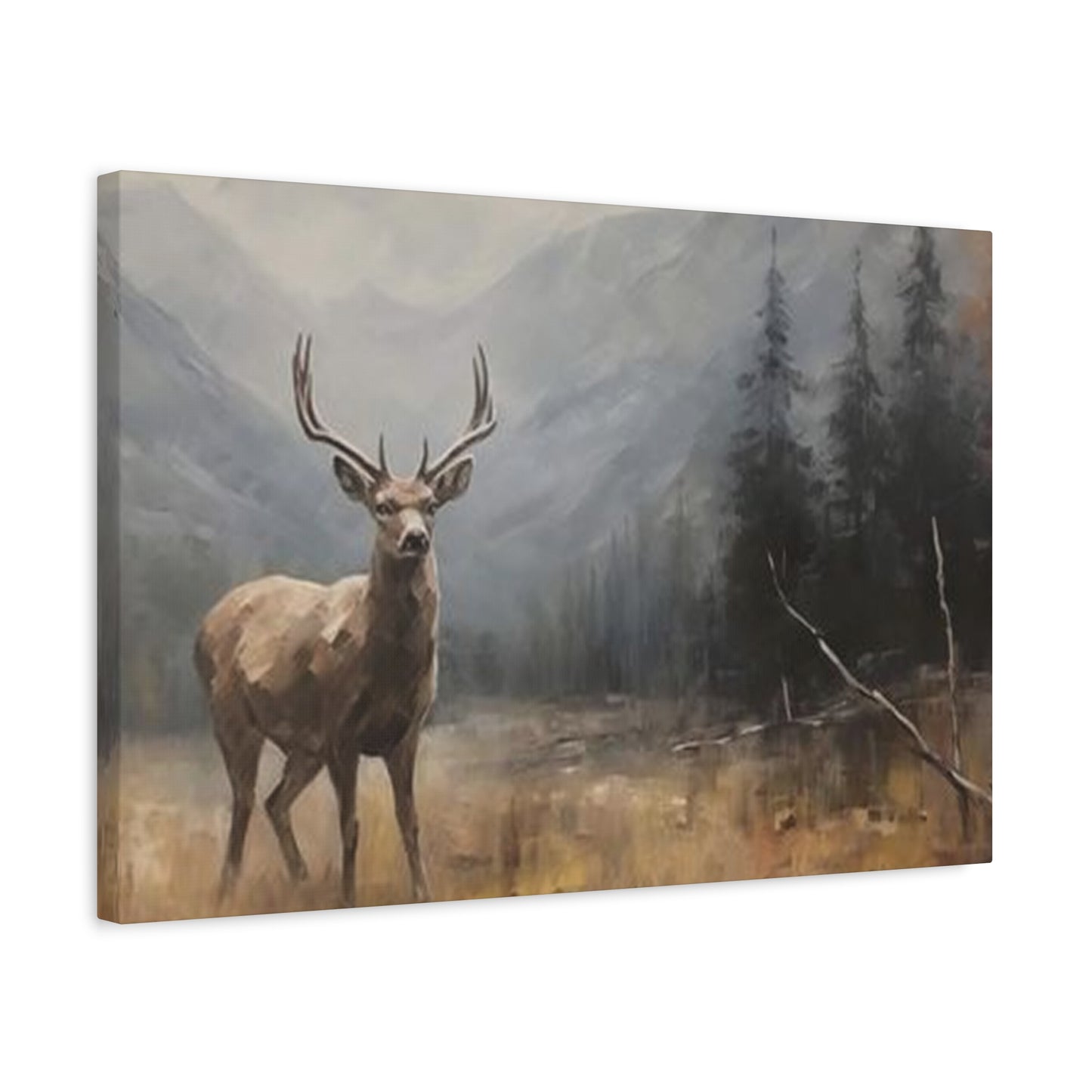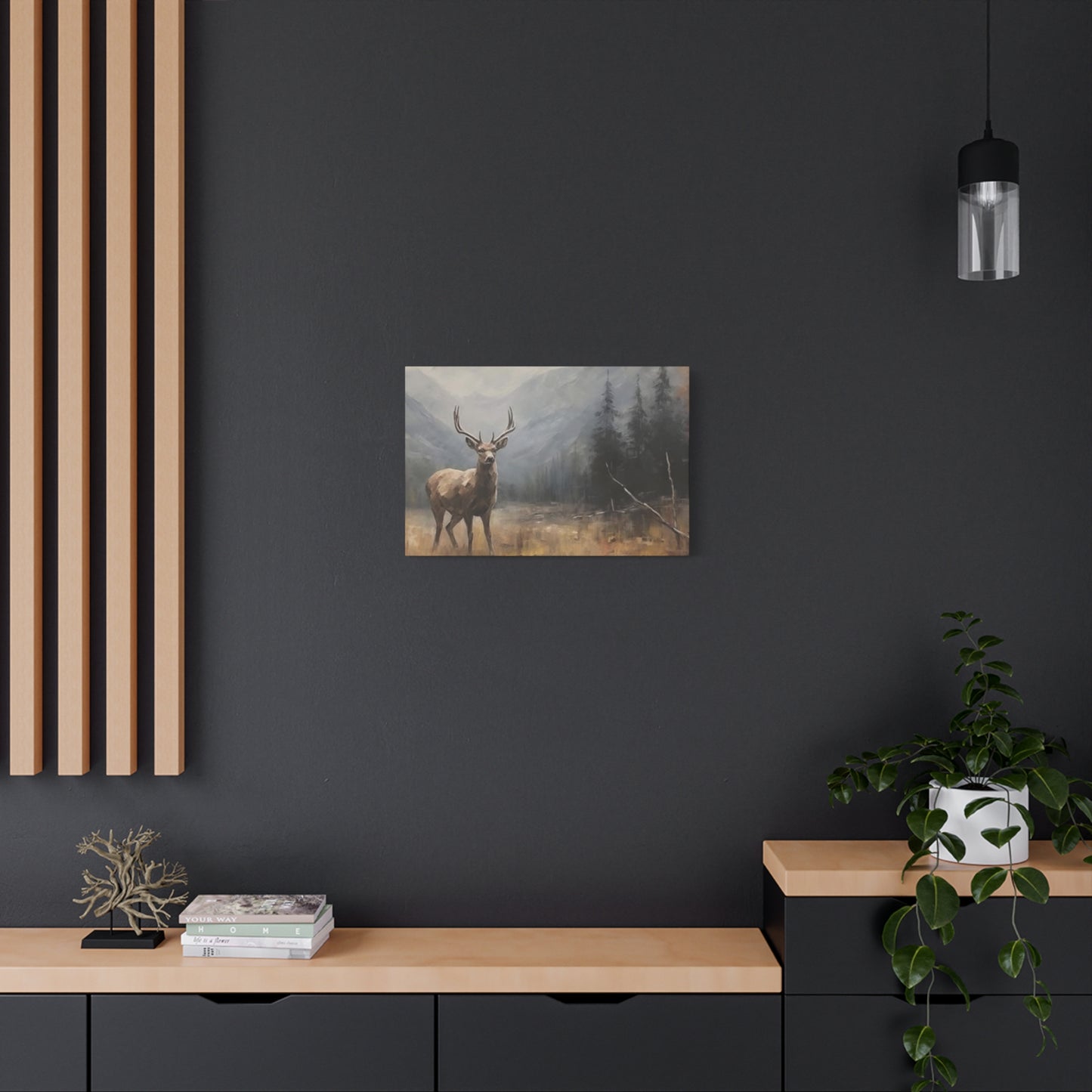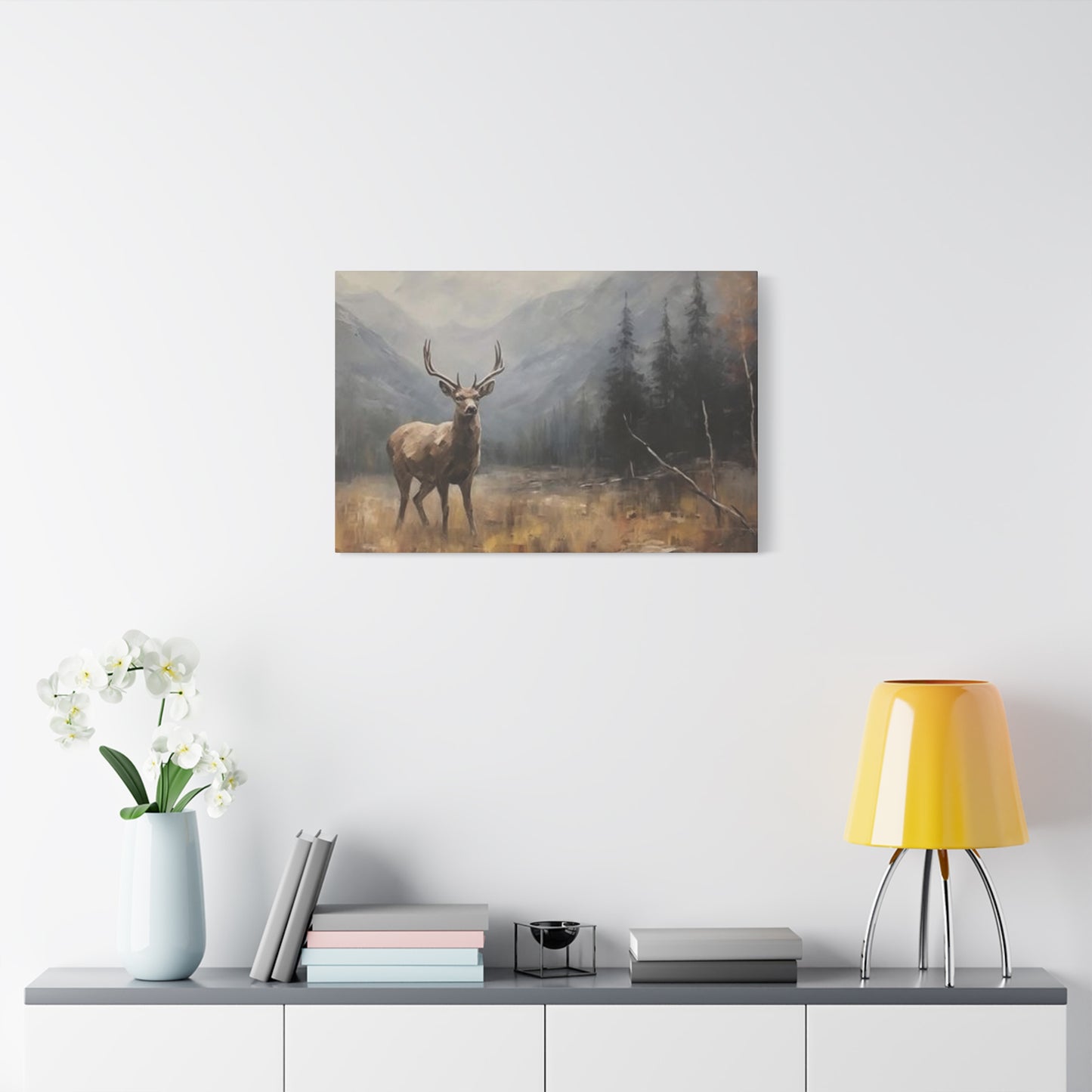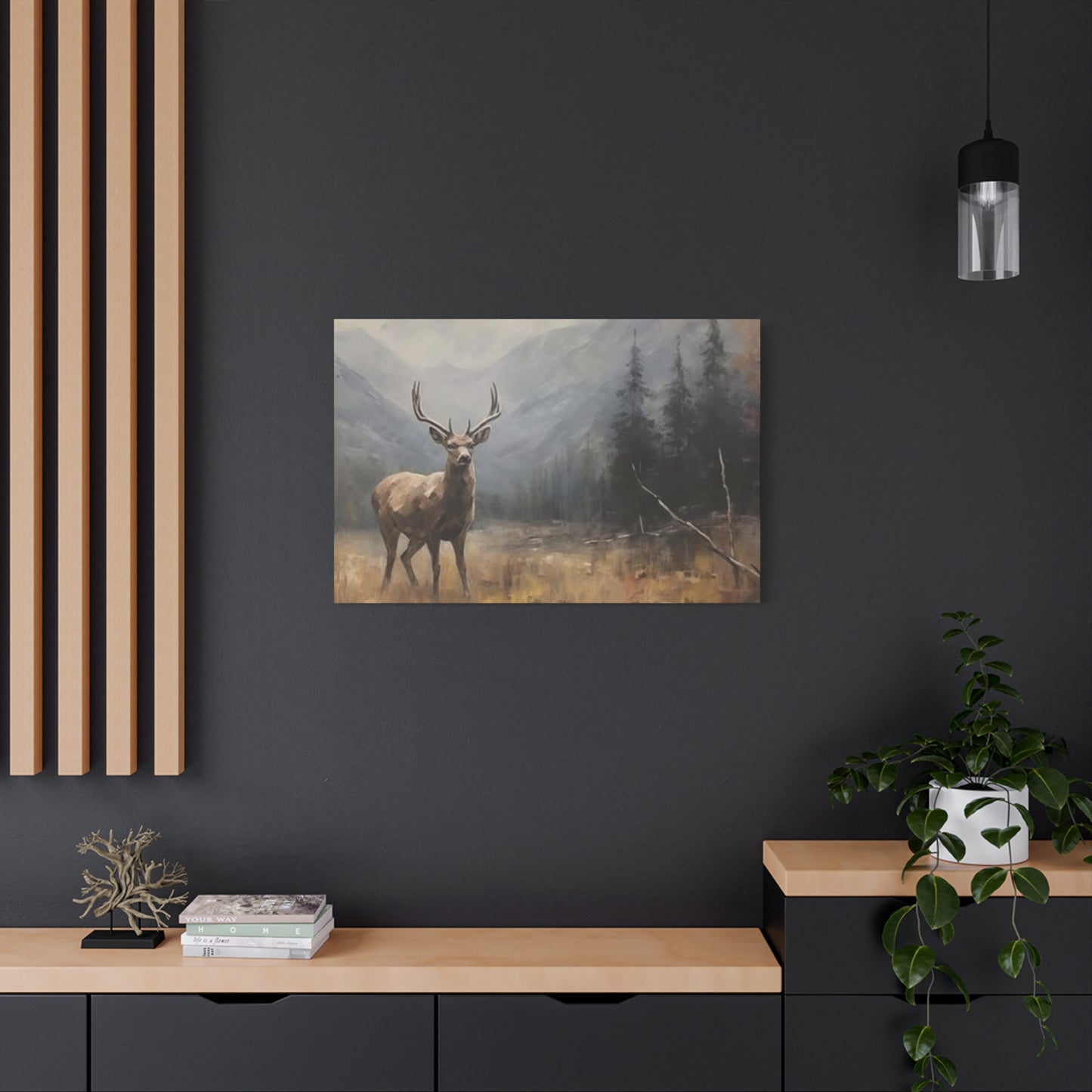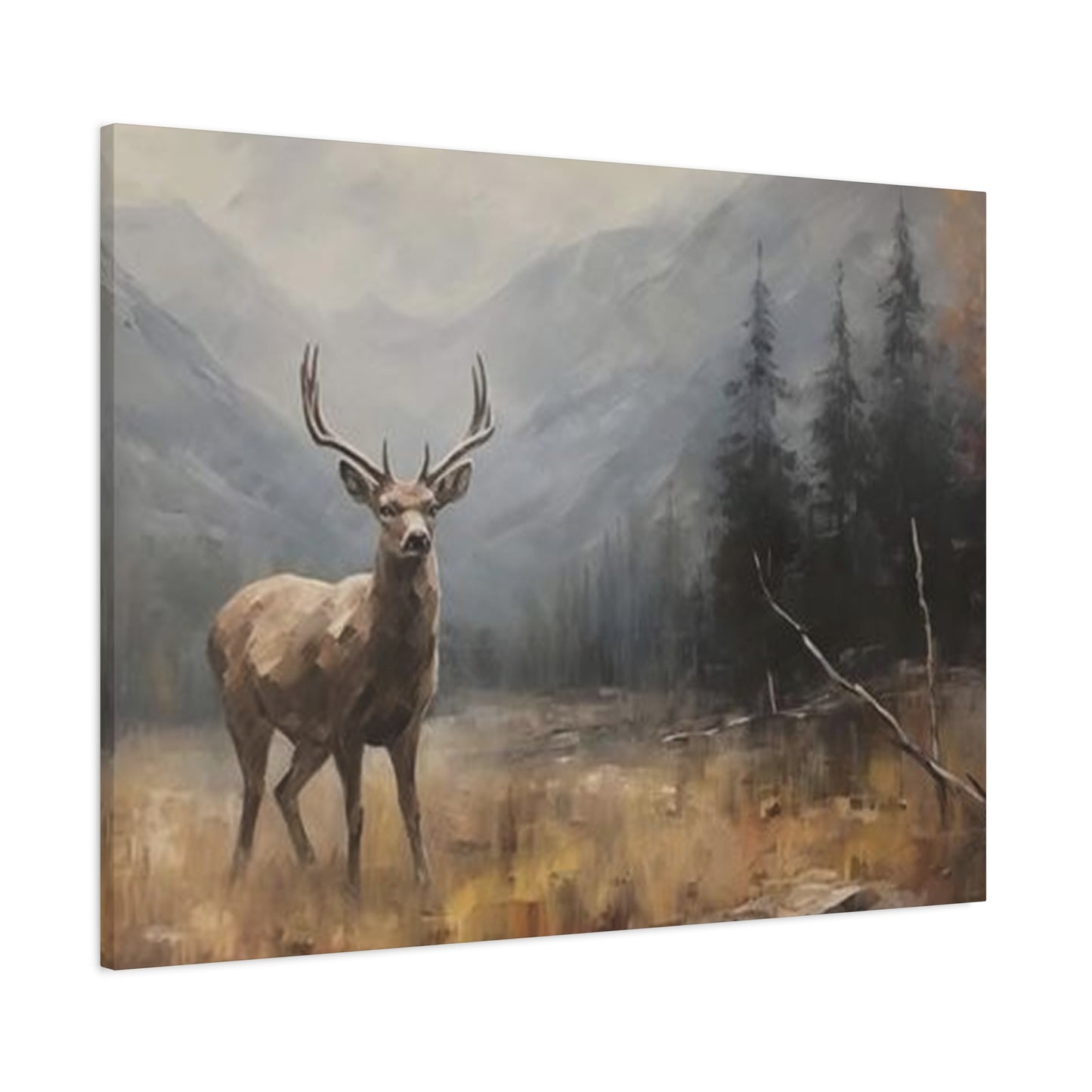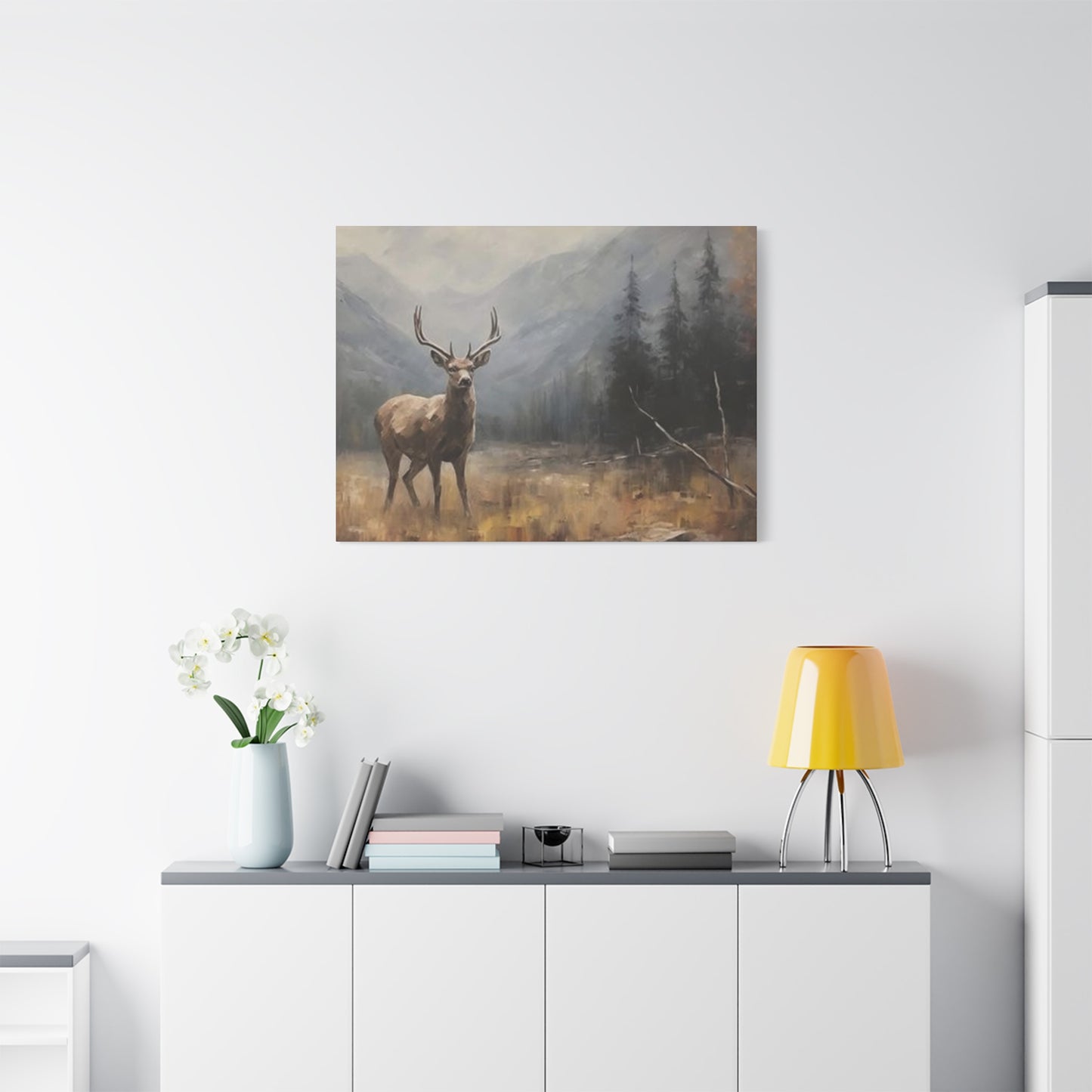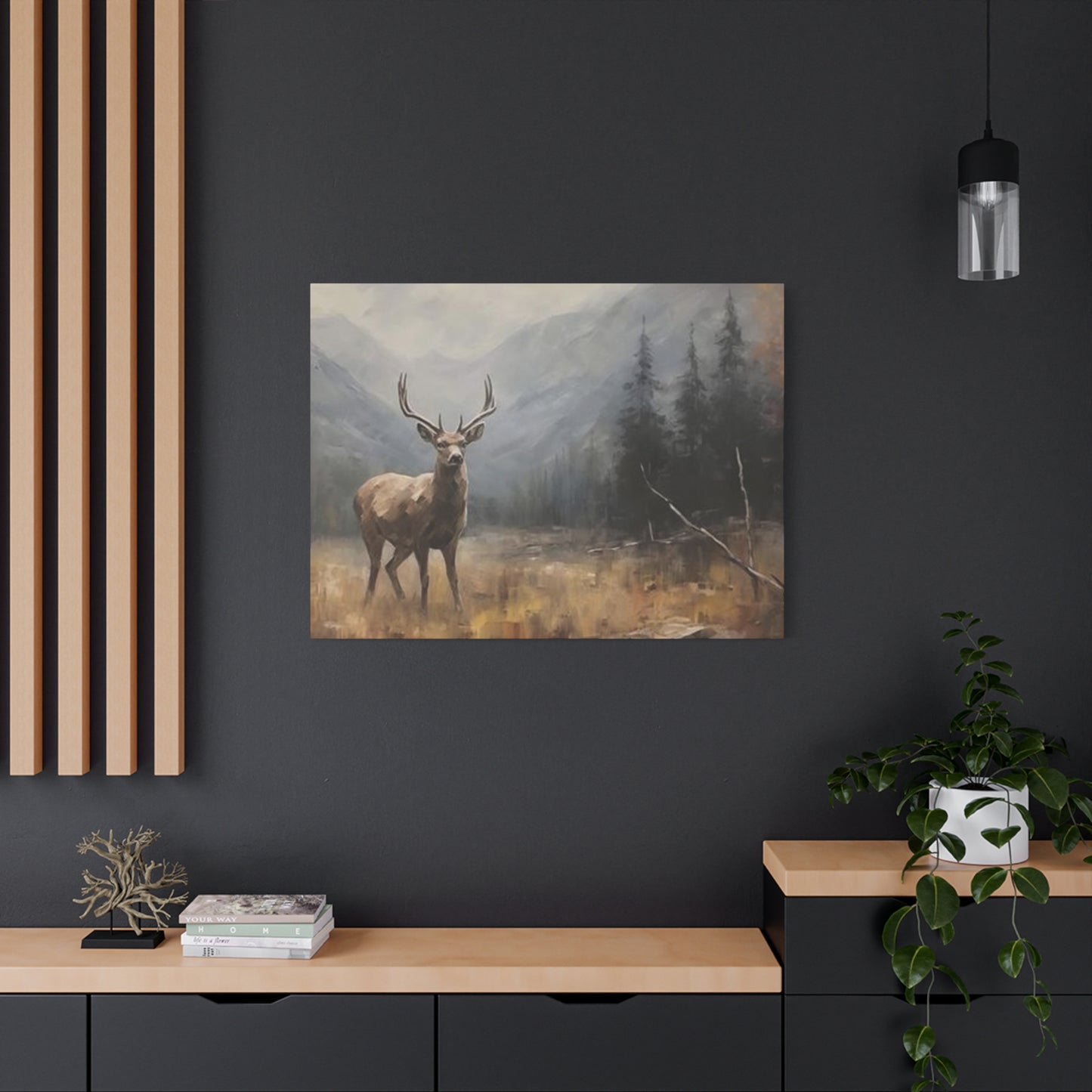Deer Wildlife Painting Wall Art & Canvas Prints
Deer Wildlife Painting Wall Art & Canvas Prints
Couldn't load pickup availability
Majestic Forest Companions: How Deer Wildlife Painting Wall Art Brings Natural Serenity Into Your Living Spaces
The allure of nature has captivated humanity for centuries, and few creatures embody the grace and tranquility of wilderness quite like deer. These elegant animals have become increasingly popular subjects in home decoration, particularly through stunning visual representations that capture their essence. When you incorporate deer wildlife painting wall art into your interior spaces, you're not merely hanging a picture—you're inviting the serene beauty of untamed forests, meadows, and mountains into your daily environment.
The fascination with deer imagery stems from their symbolic representation across cultures and their undeniable aesthetic appeal. These gentle creatures possess an inherent elegance that translates beautifully onto canvas, making them perfect subjects for artistic interpretation. Whether depicted in realistic detail or abstract forms, deer artwork creates an immediate connection between indoor spaces and the natural world outside.
The Timeless Appeal of Forest Creatures in Interior Decoration
Throughout human civilization, people have sought ways to bring elements of nature indoors. This instinct runs deep within our collective consciousness, rooted in our ancestral connection to wilderness landscapes. Before urbanization separated most people from direct contact with wild animals, deer were common sights in forests and fields, representing abundance, gentleness, and the cycles of seasons.
Today's urban and suburban dwellers often experience nature deficit, spending the majority of their time in artificial environments surrounded by concrete, steel, and synthetic materials. This disconnection from natural surroundings can create psychological tension and stress. Artwork featuring wildlife, particularly deer wildlife painting wall art, serves as a bridge between modern living spaces and the natural world, offering visual respite from the manufactured environments that dominate contemporary life.
The presence of animal imagery in homes creates what environmental psychologists call "biophilic design"—incorporating natural elements into built environments to enhance human wellbeing. Deer paintings fulfill this purpose exceptionally well, as they simultaneously evoke feelings of tranquility, freedom, and connection to something larger than ourselves. The soft eyes of a doe, the proud stance of a buck with magnificent antlers, or the playful energy of young fawns—each portrayal communicates different emotional resonances that enrich living spaces.
Various Artistic Interpretations of Cervine Subjects
Deer wildlife painting wall art manifests in remarkably diverse styles, each offering unique aesthetic qualities and emotional impacts. Realistic portrayals capture every detail of deer anatomy, from the texture of their coats to the liquid depth of their eyes. These pieces appeal to nature enthusiasts and wildlife admirers who appreciate accurate representations of animal subjects. Artists who specialize in realistic deer paintings often spend countless hours studying their subjects, observing how light plays across fur, how muscles move beneath skin, and how different species exhibit distinct characteristics.
Impressionistic deer artwork takes a different approach, using loose brushstrokes and emphasis on light effects to convey the essence rather than exact details of the subject. These paintings often feature softer color palettes and dreamlike qualities that create atmospheric, contemplative moods. The impressionistic style works particularly well for deer subjects because it captures the fleeting, almost ethereal quality of encountering these animals in their natural habitats—that brief, magical moment before they bound away into the forest.
Contemporary abstract interpretations of deer reduce the animal form to geometric shapes, bold color blocks, and stylized silhouettes. These pieces appeal to those with modern aesthetic sensibilities who want wildlife subjects without traditional representational art. Abstract deer paintings can range from minimalist single-color silhouettes to complex, colorful compositions that suggest rather than explicitly depict their subjects. This style allows artists tremendous creative freedom while maintaining recognizable cervine elements that viewers can identify.
Watercolor deer artwork offers another distinct aesthetic, characterized by soft color transitions, delicate washes, and often a lighter, more whimsical quality compared to oil or acrylic paintings. The translucent nature of watercolors lends itself beautifully to capturing the gentle, ethereal qualities associated with deer. Many watercolor deer pieces incorporate surrounding natural elements like forests, meadows, or mountain ranges, creating complete landscape scenes that tell broader environmental stories.
Mixed media approaches combine various materials and methods—perhaps combining painted backgrounds with collage elements, incorporating metallic leaf, or adding textural components that create dimensional effects. These experimental pieces push boundaries while maintaining deer as central subjects, offering collectors unique, one-of-a-kind artwork that stands out in any space.
Color Schemes That Transform Rooms Through Wildlife Imagery
The color palette of deer wildlife painting wall art significantly impacts how pieces interact with surrounding decor and influence room ambiance. Warm earth tones—browns, tans, russets, and golden ochres—create cozy, inviting atmospheres that complement rustic, farmhouse, and traditional interior styles. These colors echo the natural coloring of deer themselves and the autumn forests they inhabit, bringing seasonal warmth into spaces year-round.
Cool-toned deer artwork featuring blues, greens, and purples creates entirely different moods. These pieces often depict deer in winter landscapes, misty forests, or twilight settings. The cooler color schemes promote feelings of calm, serenity, and spaciousness, making them excellent choices for bedrooms, meditation spaces, or any room where relaxation is prioritized. The psychological effects of blue and green tones have been well-documented for reducing stress and promoting tranquility.
Monochromatic deer paintings in black and white or sepia tones offer sophisticated, timeless appeal that works across virtually any decorating style. The absence of color focuses attention on form, composition, and contrast, often creating dramatic, striking visual statements. Black and white deer wildlife painting wall art particularly suits minimalist, Scandinavian, or industrial interior designs where simplicity and strong visual elements take precedence over elaborate ornamentation.
Vibrant, unexpected color palettes in deer artwork—perhaps featuring sunset oranges and pinks, or bold jewel tones—create dynamic focal points that energize spaces. These pieces work beautifully in contemporary settings or as statement pieces in otherwise neutral rooms. The juxtaposition of a traditionally naturalistic subject rendered in unconventional colors creates visual interest and conversation-starting appeal.
Metallic accents within deer paintings add luxury and dimension. Gold or silver leaf highlighting antlers, copper tones in autumnal backgrounds, or subtle shimmer in snow scenes catch light dynamically throughout the day, creating artwork that changes appearance based on lighting conditions. These pieces occupy a special niche between traditional wildlife art and decorative luxury pieces.
Sizing Considerations for Maximum Visual Impact
Selecting appropriately sized deer wildlife painting wall art requires careful consideration of room dimensions, wall space, and viewing distances. Oversized statement pieces—those measuring 40 inches or larger in any dimension—command attention and serve as room anchors. These substantial artworks work best on focal walls with adequate surrounding space to let the piece breathe. Large deer paintings create immediate impact when entering a room, establishing the space's aesthetic tone.
In spacious rooms with high ceilings, particularly great rooms or open-concept living areas, even larger pieces measuring five, six, or seven feet in width create appropriate scale relationships with architectural elements. These gallery-sized works prevent vast wall expanses from feeling empty while avoiding the cluttered appearance that multiple smaller pieces might create in such spaces.
Medium-sized deer paintings, typically ranging from 20 to 40 inches, offer versatility for various room sizes and arrangements. These dimensions work beautifully above furniture pieces like sofas, beds, or console tables where artwork needs presence without overwhelming the space or the furniture beneath it. Medium pieces also work well in groupings, allowing collectors to display multiple complementary deer artworks that tell a cohesive visual story.
Smaller deer wildlife painting wall art, under 20 inches, serves important decorative functions despite their modest dimensions. These pieces work perfectly in vignettes, on gallery walls combining multiple artworks, in powder rooms, hallways, or any spaces where wall area is limited. Small deer paintings also allow collectors to introduce wildlife themes without committing to them as dominant design elements—useful when experimenting with new aesthetic directions.
The relationship between artwork size and viewing distance follows general guidelines that help ensure pieces can be properly appreciated. Large, detailed paintings need adequate distance for viewers to take in the full composition, while smaller pieces with intricate details benefit from closer placement along pathways or in intimate spaces where people naturally move nearer to walls.
Complementary Decor Styles That Enhance Cervine Artwork
Deer wildlife painting wall art adapts remarkably well to diverse interior design styles, though certain aesthetic approaches create particularly harmonious relationships with wildlife imagery. Rustic and cabin styles naturally complement deer artwork, as both celebrate nature and outdoor living. In these settings, deer paintings enhance the overall theme, pairing beautifully with natural wood furniture, stone elements, leather upholstery, and textile patterns featuring outdoor motifs. The artwork reinforces the connection to wilderness that rustic design inherently celebrates.
Farmhouse style, with its emphasis on comfortable simplicity and natural materials, provides another ideal context for deer paintings. The neutral color palettes typical of farmhouse interiors allow wildlife artwork to stand out without competing with busy patterns or bold colors. Shiplap walls, distressed wood finishes, and vintage-inspired furnishings create backdrops that let deer imagery shine while maintaining cohesive, inviting atmospheres.
Modern lodge style, sometimes called "mountain modern," combines rustic elements with contemporary clean lines and updated color palettes. This hybrid aesthetic particularly suits stylized or contemporary interpretations of deer subjects. The juxtaposition of sleek furniture and polished surfaces with wildlife imagery creates dynamic tension that prevents either element from feeling clichéd or predictable.
Scandinavian design principles emphasizing simplicity, functionality, and connection to nature create surprisingly perfect settings for deer wildlife painting wall art. The Nordic aesthetic's light color palettes, natural wood tones, and uncluttered spaces allow artwork to become focal points without visual competition. Minimalist deer silhouettes or simple, elegant deer portraits align beautifully with Scandinavian design philosophies.
Eclectic interiors that blend various styles, periods, and influences can successfully incorporate deer artwork when unified by consistent color palettes or repeated motifs. In eclectic spaces, deer paintings might dialogue with other animal subjects, botanical prints, landscape photography, or abstract pieces, creating layered, personalized environments that reflect collectors' diverse interests.
Even traditionally formal or elegant interiors can accommodate deer imagery when pieces are selected thoughtfully. Sophisticated, painterly deer portraits with classical composition approaches and refined frames work in traditional settings alongside antique furniture and Oriental rugs. The key lies in matching the artwork's execution level and presentation to the room's overall refinement.
Placement Strategies That Maximize Artistic Expression
Where you position deer wildlife painting wall art within your home significantly affects both the artwork's visibility and its impact on space functionality. Living rooms typically offer prime placement opportunities, as these central gathering spaces receive regular attention from residents and visitors. Above the sofa represents the most common living room placement, where artwork creates a focal point for seating arrangements. For this location, width should ideally extend roughly two-thirds to three-quarters of the furniture's width, creating visual balance without appearing too small or overwhelming.
Fireplace mantels present another excellent living room opportunity for deer artwork. Pieces placed above mantels benefit from the symbolic and literal centrality of hearths within homes. The natural gathering focus that fireplaces create extends to artwork displayed above them, ensuring regular viewing and appreciation. When placing deer paintings above fireplaces, consider how mantel decorations and the firebox opening relate to the artwork—balanced arrangements create more cohesive appearances than haphazard groupings.
Bedroom placements of deer wildlife painting wall art serve different purposes than public room displays. In private sleeping quarters, wildlife imagery connects to personal preferences rather than entertaining guests. Above the bed remains the most popular bedroom placement, where artwork becomes the last thing seen before sleep and first upon waking—positions that can subtly influence mood and mindset. The calming presence of deer subjects particularly suits bedroom environments, promoting peaceful atmospheres conducive to rest.
Dining rooms offer interesting opportunities for deer artwork, particularly pieces that complement the room's existing color scheme and style. Deer paintings in dining spaces might nod toward hunting traditions, celebration of nature's bounty, or simply serve as conversation pieces during meals. Consider how artwork relates to dining furniture—formal pieces suit formal dining rooms, while more casual interpretations work better in breakfast nooks or kitchen dining areas.
Home offices and studies represent increasingly important spaces as remote work becomes more common. Deer wildlife painting wall art in workspaces can provide mental breaks during long work sessions, offering natural imagery to rest eyes upon between tasks. The symbolic qualities of deer—grace, alertness, gentleness—might also provide subtle inspirational elements in professional environments. Position artwork where it's visible from the desk without creating glare on computer screens.
Hallways and entryways, often neglected in decorating schemes, benefit tremendously from thoughtfully placed artwork. These transitional spaces offer opportunities to preview your home's aesthetic character while providing interesting visuals along pathways. Deer paintings in entryways create immediate impressions on arriving guests, communicating your appreciation for nature and establishing your home's decorative tone.
Staircases present unique vertical display opportunities where multiple smaller deer pieces might create ascending or descending arrangements, or where single large pieces can fill substantial wall expanses visible from multiple levels. The angles at which staircase artwork is viewed require consideration—pieces should look correct from both ascending and descending perspectives rather than optimal from only one direction.
Framing Choices That Elevate Wildlife Artwork
The frame surrounding deer wildlife painting wall art functions as transitional element between artwork and architecture, significantly impacting the piece's overall presentation and effectiveness. Frame selection requires consideration of both the artwork itself and the room's existing design elements to create cohesive appearances.
Natural wood frames represent the most intuitive choice for deer paintings, echoing the forest environments where these animals live. However, "natural wood" encompasses tremendous variety—from light, blonde woods like oak or maple to dark walnut or ebony finishes. The wood's tone should complement both the painting's color palette and the room's woodwork, furniture, and flooring. Rustic frames with visible wood grain, knots, or distressed finishes enhance casual, cabin-style spaces, while smooth, refined wood frames suit more formal environments.
Metallic frames in gold, silver, bronze, or copper tones add formality and luxury to deer artwork. Gold frames, particularly ornate examples with decorative corners and profiles, elevate paintings to fine art status, suitable for traditional or elegant interiors. Silver and brushed nickel frames create contemporary, sophisticated presentations that work beautifully in modern settings. Bronze and copper tones occupy a middle ground, offering warmth without the formality of gold or the coolness of silver.
Black frames create strong, definitive boundaries between artwork and walls, generating dramatic contrast particularly effective with white or light-colored walls. Black frames suit virtually any deer wildlife painting wall art style from realistic to abstract, providing neutral containers that let artwork dominate visual attention. The thickness of black frames creates different effects—thin frames feel modern and minimal, while substantial black frames generate gallery-style gravitas.
White or cream frames generate airy, light presentations that suit cottage, farmhouse, or coastal interior styles. These frames work particularly well with deer paintings featuring lighter color palettes or significant white space in compositions. White frames can make artwork feel larger and more open while creating softer visual boundaries than darker frame colors.
Rustic barn wood frames, constructed from reclaimed wood with weathered patinas and varied coloring, perfectly complement deer subjects by reinforcing connections to rural landscapes and outdoor environments. These frames tell their own stories through visible age marks, creating multi-layered visual narratives when paired with wildlife imagery.
Floating frames, which suspend artwork between front glazing and backing with visible space around edges, create contemporary, museum-quality presentations. This framing style works especially well with canvas paintings and modern deer interpretations, generating clean, sophisticated appearances.
The decision whether to include matting requires consideration of artwork style and size. Mats create breathing room between artwork and frames, particularly beneficial for smaller pieces that might otherwise feel cramped. However, edge-to-edge presentations without matting suit contemporary aesthetics and maximize the visual impact of large statement pieces.
Material Substrates and Their Unique Characteristics
Deer wildlife painting wall art manifests across various physical substrates, each offering distinct aesthetic qualities and practical considerations. Canvas remains the most traditional and popular substrate for painted artwork. Stretched canvas provides texture that becomes part of the artwork's character, with woven fabric visible in brushstrokes and creating subtle dimensionality. Gallery-wrapped canvas, where the painting continues around the sides of the stretcher frame, allows frameless display that suits contemporary interiors and reduces costs compared to framing.
Wood panels offer rigid, stable surfaces for deer paintings, particularly favored for detailed work requiring smooth substrates. Birch, maple, and mahogany panels have supported centuries of fine art, providing dimensionally stable surfaces that don't expand or contract like canvas. Wood panels can be left visible around edges for rustic presentations or framed traditionally. The natural wood surface sometimes shows through paint layers, creating warm undertones that complement earth-toned deer subjects.
Metal surfaces, particularly aluminum and copper, provide contemporary substrates for deer artwork using specialized paints or printing processes. Metal's reflective qualities create luminous effects impossible on other materials, with light dancing across surfaces as viewing angles change. Metal substrates particularly suit modern, stylized deer interpretations where unconventional materials reinforce contemporary aesthetic approaches.
Paper and watercolor board serve as primary substrates for works in water-based media. The absorbent qualities of watercolor paper create the soft, flowing color transitions characteristic of this medium. Paper substrates require protective glazing and framing but allow for delicate, detailed work that captures deer subjects with luminous transparency.
Acrylic glass and specialized polymers enable printing processes that transfer deer imagery onto clear or frosted surfaces, creating modern, minimalist presentations. These materials suit contemporary interiors where traditional painted canvases might feel incongruous with overall design directions.
Lighting Strategies That Bring Artwork to Life
Proper illumination transforms deer wildlife painting wall art from mere decoration into dynamic focal points that enhance spaces throughout the day and evening. Natural daylight represents the most flattering light source for viewing artwork, revealing colors accurately and creating subtle shifts in appearance as sun angles change throughout the day. Position deer paintings on walls that receive indirect natural light rather than direct sunlight, which can cause fading over time and create glare that obscures details.
For rooms lacking abundant natural light or for evening viewing, artificial lighting requires thoughtful implementation. Picture lights mounted directly above or below artwork frames provide focused illumination specifically designed for art viewing. These fixtures, available in various sizes and finishes, cast controlled light across painting surfaces without producing harsh glare. LED picture lights offer energy efficiency, minimal heat generation, and long lifespans that reduce maintenance needs.
Track lighting systems provide flexible options for illuminating multiple artworks or adjusting light direction as pieces are repositioned. Adjustable heads allow precise aiming to ensure even coverage across entire painting surfaces. When using track lighting for deer wildlife painting wall art, angle lights at approximately 30 degrees to the wall to minimize glare while providing adequate illumination.
Recessed ceiling spotlights, particularly adjustable models, create clean, architectural lighting solutions without visible fixtures that might compete with artwork aesthetics. These installations work beautifully in contemporary settings where minimalist presentations are prioritized. Professional installation ensures proper positioning and beam spreads that appropriately illuminate artwork.
Ambient room lighting affects how deer paintings appear even when not specifically lit. Warm-toned ambient light (2700-3000K) creates cozy atmospheres that complement earth-toned deer subjects, while cooler lighting (3500-4000K) generates crisper, more energetic environments suitable for contemporary spaces. Dimmable lighting allows adjusting ambient levels to emphasize artwork in evening hours.
Accent lighting from table or floor lamps positioned to cast indirect light toward artwork can supplement dedicated picture lighting, creating layered illumination that adds depth and dimension to rooms while showcasing deer paintings. This approach integrates artwork lighting into overall room lighting schemes rather than treating them as separate considerations.
Seasonal Variations and Their Decorative Flexibility
Deer wildlife painting wall art lends itself naturally to seasonal rotation, allowing homeowners to refresh spaces without complete redecorating. This flexibility stems from deer's year-round presence across various environments and the symbolic associations different seasons carry.
Spring imagery might feature deer with young fawns, evoking themes of renewal, new beginnings, and the awakening natural world. Paintings depicting deer in meadows filled with wildflowers or among budding trees capture spring's fresh energy. Lighter color palettes with abundant greens, yellows, and pastels characterize springtime deer artwork that brings uplifting, hopeful qualities into interiors.
Summer deer scenes often emphasize lush vegetation, deep forest shade, or deer visiting water sources. These paintings convey abundance, vitality, and the fullness of the growing season. Rich greens dominate summer deer artwork, creating vibrant, life-affirming visual statements. Summer scenes work particularly well in vacation homes, cabins, or lakeside properties where the artwork's environment mirrors the actual surroundings outside windows.
Autumn represents peak season for deer imagery, when these animals appear most frequently in art due to the mating season and hunting traditions. Fall deer paintings feature spectacular foliage in reds, oranges, yellows, and browns, with bucks often portrayed with impressive antler racks at their seasonal peak. The warm, nostalgic quality of autumn deer wildlife painting wall art creates cozy, welcoming atmospheres perfect for gathering spaces. Many collectors maintain autumn deer pieces as permanent fixtures given their popularity and broad appeal.
Winter scenes capture deer navigating snowy landscapes, often portrayed against stark white backgrounds that emphasize their forms. These paintings convey quiet beauty, resilience, and the serene stillness of winter wilderness. Cool color palettes featuring whites, blues, and grays create peaceful, contemplative moods. Winter deer artwork works beautifully year-round in rooms seeking calm, minimalist aesthetics, or seasonally to celebrate cold-weather months.
Collectors who enjoy seasonal rotation might acquire deer paintings representing different times of year, swapping pieces quarterly to keep interiors feeling fresh and aligned with outdoor conditions. This practice prevents "visual habituation"—the tendency to stop noticing permanent fixtures—while expressing appreciation for seasonal cycles.
The Symbolic Meaning Behind Cervine Imagery
Throughout human cultures, deer carry rich symbolic meanings that add layers of significance beyond their aesthetic appeal. Understanding these associations provides deeper appreciation for deer wildlife painting wall art and might influence which pieces resonate most strongly with individual collectors.
In many traditions, deer represent gentleness, grace, and sensitivity. Their alert yet non-threatening presence symbolizes awareness without aggression, making them emblems of peaceful strength. For homes seeking to cultivate calm, nurturing environments, deer imagery reinforces these qualities through daily visual presence.
Deer's association with forests and wilderness makes them symbols of natural world connection, environmental awareness, and appreciation for untamed landscapes. In increasingly urbanized societies, deer artwork serves as reminder of wild spaces and the importance of preserving them. This symbolic function appeals particularly to environmentally conscious individuals who view nature connection as essential to human wellbeing.
Various spiritual and religious traditions assign specific meanings to deer. Some view them as messengers, guides between physical and spiritual realms, or symbols of intuition and inner knowing. These associations attract individuals who incorporate spiritual symbolism into their living spaces, making deer wildlife painting wall art serve contemplative or devotional purposes beyond decoration.
The seasonal shedding and regrowth of antlers creates powerful symbolism around renewal, regeneration, and cycles of death and rebirth. This natural phenomenon makes deer, particularly bucks, symbols of resilience and the ability to let go of what no longer serves us while growing anew. Such meanings resonate with people navigating life transitions or seeking reminders of personal growth possibilities.
In some Native American traditions, deer represent unconditional love, kindness, and the ability to listen to inner voices. These cultural associations add depth for collectors with indigenous heritage or those drawn to these wisdom traditions.
European heraldry frequently featured deer as symbols of nobility, peace, and harmony. Historical associations with aristocratic hunting traditions create complex symbolic territory—simultaneously representing human dominion over nature and respect for worthy, noble prey.
Commissioning Custom Pieces for Personal Significance
While commercially available deer wildlife painting wall art offers tremendous variety, commissioned custom pieces provide opportunities to obtain exactly the imagery desired while supporting living artists. Custom commissions allow collectors to specify species, poses, settings, sizes, color palettes, and styles that perfectly suit their spaces and preferences.
The commissioning process typically begins with researching artists whose styles align with your vision. Many painters maintain online portfolios showcasing their work, making it easier than ever to discover artists whose approach to deer subjects resonates with your aesthetic sensibilities. Some artists specialize exclusively in wildlife subjects, bringing deep expertise to deer portrayals, while others work across various subjects but demonstrate capability with animal imagery.
Initial consultations establish commission parameters—discussing desired size, composition ideas, color preferences, and budget considerations. Bring reference images showing not only deer poses or species you favor but also examples of the artist's previous work that attracted you to them. Clear communication during this phase prevents misunderstandings and ensures the finished piece meets expectations.
Most artists create preliminary sketches or digital mockups showing proposed compositions before beginning final paintings. This approval stage allows requesting adjustments to positioning, backgrounds, or other elements before significant work investment. Take time reviewing proposals, considering how pieces will function in intended spaces rather than evaluating them in isolation.
Commission timelines vary widely depending on piece complexity, artist workload, and medium. Simple, smaller paintings might be completed in weeks, while large, detailed pieces could require months. Discuss timeframes upfront, particularly if artwork is intended for specific occasions or seasonal display.
Pricing for commissioned deer wildlife painting wall art reflects factors including size, medium, complexity, and artist reputation. Established artists with strong followings command higher prices than emerging talents, though both might produce excellent work. Custom pieces typically cost significantly more than comparable commercially available prints or mass-produced paintings, but offer uniqueness and the satisfaction of directly supporting artists.
Some commissions include provisions for preliminary studies or smaller related pieces that might become additional artworks. Discuss ownership of preliminary sketches and whether artist retains reproduction rights for prints or other uses of commissioned images.
Caring for and Preserving Wildlife Artwork
Proper maintenance ensures deer wildlife painting wall art retains its beauty and value for years or generations. Environmental conditions significantly impact artwork longevity, making climate control important for preservation. Avoid hanging paintings where they experience temperature extremes, high humidity, or excessive dryness. Bathrooms and kitchens, despite being common decorating spaces, expose artwork to humidity fluctuations and cooking residues that can damage paintings over time.
Direct sunlight represents one of the most significant threats to artwork longevity. Ultraviolet radiation causes pigments to fade, with some colors proving more vulnerable than others. Reds, yellows, and purples tend to fade faster than blues and earth tones. Position deer paintings away from windows receiving direct sun, or use UV-filtering glazing on framed pieces and window treatments that moderate light exposure.
Regular dusting prevents accumulation of particles that can abrade or discolor painting surfaces. Use soft, clean cloths or specialized art dusting brushes, working gently to avoid snagging canvas weave or disturbing paint surfaces. For framed pieces behind glass, clean glazing with appropriate glass cleaners, keeping moisture away from frame edges where it might seep behind glass and damage artwork.
Unglazed canvas paintings occasionally benefit from professional cleaning to remove accumulated grime, but avoid attempting DIY cleaning with household products or water, which can cause irreparable damage. Professional art conservators possess expertise and materials necessary for safely cleaning paintings without harming delicate surfaces.
Inspect deer wildlife painting wall art periodically for signs of deterioration including color changes, cracking paint (called craquelure), loose or separating canvas, frame damage, or evidence of pest activity. Early detection of problems allows addressing them before they worsen. Small issues like loose frame joints can often be remedied easily, while significant paint damage requires professional conservation.
For particularly valuable pieces, consider professional conservation framing using acid-free mats, UV-protective glazing, and sealed backing that prevents environmental contaminants from reaching artwork. While more expensive initially, conservation framing significantly extends artwork lifespans.
Climate-controlled storage protects deer paintings not currently displayed from environmental damage. Store pieces vertically rather than stacked horizontally, separated by acid-free tissue or glassine to prevent surfaces touching. Avoid attics and basements where temperature and humidity fluctuate dramatically unless these spaces are climate-controlled.
Creating Gallery Walls with Wildlife Themes
Gallery walls combining multiple artworks create dynamic, personalized displays that showcase collecting interests while filling substantial wall areas. Deer wildlife painting wall art works beautifully as anchor pieces in gallery arrangements or as repeated motifs across multiple pieces.
Planning gallery walls begins with selecting wall space and determining overall dimensions. Tape off the intended area or use paper templates sized to represent each artwork, arranging them on the floor before committing to hanging. This preparatory step allows experimenting with compositions without creating unnecessary wall holes.
Several approaches organize gallery wall compositions. Symmetrical arrangements create orderly, traditional appearances with pieces aligned along central axes or arranged in regular grids. This approach suits formal spaces and collectors preferring structured presentations. Asymmetrical or organic arrangements feel more casual and contemporary, with pieces of various sizes creating dynamic, energetic compositions without rigid alignment.
Maintain consistent spacing between pieces—typically 2-4 inches—to create cohesion while allowing individual artworks to maintain distinct identities. Too-tight spacing makes walls feel cluttered, while excessive spacing prevents pieces from relating visually to neighbors.
Gallery walls can focus exclusively on deer subjects, creating collections that explore various artistic interpretations of similar themes. Alternatively, deer wildlife painting wall art might anchor broader nature-themed galleries incorporating other animals, botanical subjects, or landscape imagery. This approach prevents monotony while maintaining thematic coherence.
Frame consistency versus variety creates different effects. Matching frames across all pieces generates unified, cohesive appearances, while varied frames (maintained within consistent color families or style categories) feel more eclectic and collected-over-time. Consider whether uniformity or diversity better suits your aesthetic preferences and the room's overall design.
Include various artwork sizes in gallery walls to create visual interest. Combining large anchor pieces with medium and small works creates hierarchies that guide eye movement and prevent compositions from feeling monotonous. The largest piece often serves as starting point around which others are arranged.
Gallery walls work beautifully on staircase walls, long hallways, or behind furniture pieces like sofas or dining tables. These substantial wall areas benefit from multiple artworks working collectively rather than single pieces that might feel small relative to available space.
Regional Styles and Cultural Interpretations
Deer wildlife painting wall art reflects diverse cultural perspectives and regional artistic traditions that influence how these animals are portrayed and what they represent within different contexts. Understanding these variations enriches appreciation for the breadth of deer imagery available to collectors.
North American wildlife art traditions, influenced heavily by wilderness preservation movements and hunting cultures, often emphasize realistic portrayals showcasing deer in natural habitats. These pieces frequently highlight specific species—white-tailed deer in eastern forests, mule deer in western mountains, or elk (also called wapiti, largest North American deer species) across various terrains. The emphasis on accuracy and environmental context reflects North American values of wildlife conservation and outdoor recreation.
European artistic traditions bring different sensibilities to deer subjects, often incorporating them into pastoral or aristocratic contexts reflecting centuries of deer park management and royal hunting reserves. European deer paintings might feature more domesticated landscapes, with red deer or fallow deer portrayed in parklands rather than deep wilderness. Classical artistic techniques and formalist composition approaches characterize much European wildlife art.
Asian artistic traditions, particularly Japanese and Chinese styles, bring distinctive aesthetic approaches to deer imagery. Japanese paintings often feature sika deer in compositions emphasizing seasonal beauty, incorporating cherry blossoms, maple leaves, or snow. The Japanese aesthetic principle of wabi-sabi—finding beauty in imperfection and impermanence—influences how deer are portrayed, often with loose, expressive brushwork rather than photographic precision. Chinese brush painting traditions depict deer using minimal, suggestive brushstrokes that capture essence rather than exhaustive detail.
Scandinavian and Nordic approaches to deer wildlife painting wall art often emphasize the severe beauty of northern climates, depicting reindeer in stark, minimalist compositions that reflect the aesthetic restraint characteristic of Nordic design across various media. These pieces frequently use limited color palettes dominated by whites, grays, and blues, creating atmospheric works that convey the austere majesty of Arctic and sub-Arctic environments.
Contemporary indigenous artists bring culturally specific perspectives to deer imagery, often incorporating traditional symbolic elements or storytelling approaches that differ significantly from Western wildlife art conventions. These pieces might use stylized forms, symbolic colors, or narrative compositions that communicate cultural knowledge alongside aesthetic appeal.
Pairing Artwork with Complementary Decorative Elements
Deer wildlife painting wall art gains additional impact when thoughtfully paired with other decorative elements that reinforce or complement the artwork's themes and aesthetics. Creating these harmonious relationships transforms individual pieces into components of larger, cohesive design schemes.
Natural elements echo the environments depicted in deer paintings. Displaying artwork near houseplants creates visual connections between portrayed wilderness and living greenery, reinforcing biophilic design principles. Choose plants that don't require such intense light that they must sit directly in windows where they'd compete with artwork, nor so close that watering might damage paintings. Ferns, pothos, and similar foliage complement deer imagery beautifully.
Natural materials in furniture and accessories enhance deer wildlife painting wall art through material echoes. Wood furniture, particularly pieces with visible grain or live edges, leather upholstery, stone or slate accessories, woven natural fiber textiles, and antler or horn decorative objects create material conversations with deer subjects. However, use restraint to avoid overly literal interpretations that feel theme-park-like rather than sophisticated.
Complementary artwork creates visual dialogues while preventing single-subject monotony. Pair deer paintings with landscape scenes depicting similar environments, botanical prints of plants from deer habitats, or other wildlife subjects that might share ecosystems. These combinations build richer visual narratives than isolated pieces.
Color coordination between deer wildlife painting wall art and surrounding textiles, wall colors, and accessories enhances cohesion. Pull accent colors from paintings into throw pillows, blankets, rugs, or curtains. This technique "grounds" artwork in its surroundings rather than leaving it floating independently on walls. However, avoid overly matching everything to single paint colors, which creates monotonous rather than harmonious environments.
Sculptural elements provide dimensional counterpoints to two-dimensional paintings. Deer sculptures, carved wooden pieces, or ceramic animals on nearby surfaces create three-dimensional relationships while varying the sensory experience beyond purely visual. Mix materials and finishes—perhaps bronze sculptures with canvas paintings, or smooth ceramic pieces with heavily textured artwork—to create variety within thematic consistency.
Books about wildlife, nature photography, or wilderness travel displayed on nearby shelves or tables reinforce themes established by deer paintings while demonstrating genuine interest beyond mere decoration. This approach creates more authentic, lived-in appearances compared to spaces where themed decor seems superficially applied.
Conclusion
While most people acquire deer wildlife painting wall art primarily for aesthetic enjoyment, understanding value factors helps make informed collecting decisions and ensures proper protection of investments made in original artwork.
Original paintings by established artists represent the most significant investments in wildlife art. Factors affecting original artwork values include artist reputation and career stage, artwork size and complexity, medium and materials, subject matter appeal, condition and provenance, and market demand for particular styles or subjects. Works by deceased artists whose reputations have been established historically command premium prices, while living artists' work values depend heavily on current critical reception and market position.
Limited edition prints offer middle ground between original artwork and mass-produced reproductions. These pieces, typically signed and numbered by artists, maintain some scarcity value while remaining more affordable than originals. Edition size significantly impacts value—smaller editions (less than 100 prints) command higher prices than larger runs. Artist proofs and early edition numbers sometimes carry premium values.
Condition profoundly affects artwork value. Original pieces showing fading, damage, or amateur repairs lose significant value compared to pristine examples. For valuable deer wildlife painting wall art, professional conservation and proper environmental conditions protect investment value while ensuring continued enjoyment.
Provenance documentation—records of ownership history, exhibition, and publication—enhances artwork value by establishing authenticity and increasing pieces' historical interest. Retain all documentation received when acquiring artwork, including certificates of authenticity, receipts, artist communications, and any exhibition or publication history.
For collectors interested in investment potential, focus on quality over quantity. Single exceptional piece by recognized artist likely appreciates more reliably than multiple mediocre works. Research artists whose work you're considering, examining auction results, gallery representation, museum collections, and critical reception.
Share

